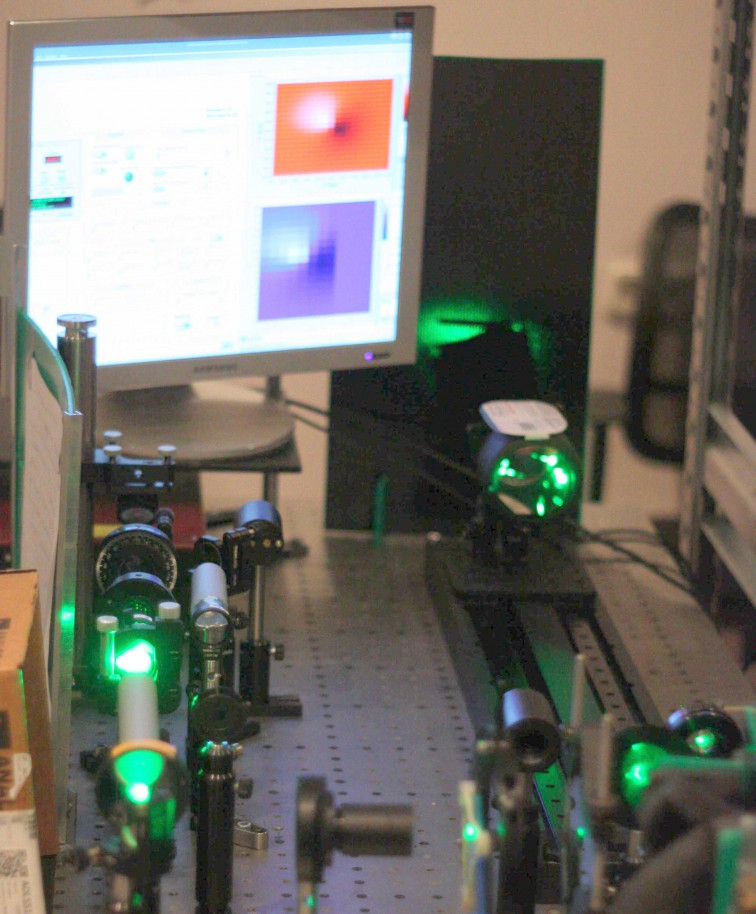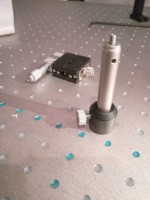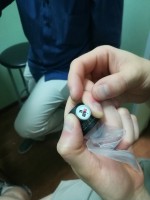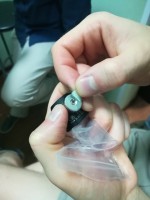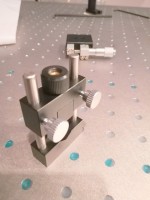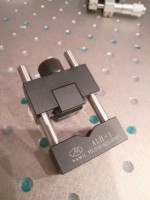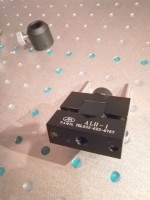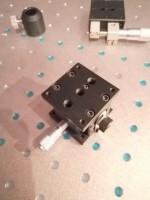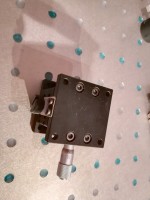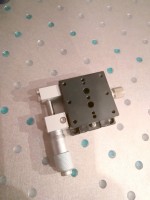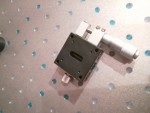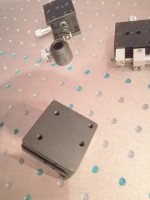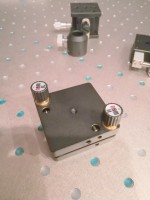Labs & Equipment
Time resolved optically pumped scanning optical microscope (TROPSOM)
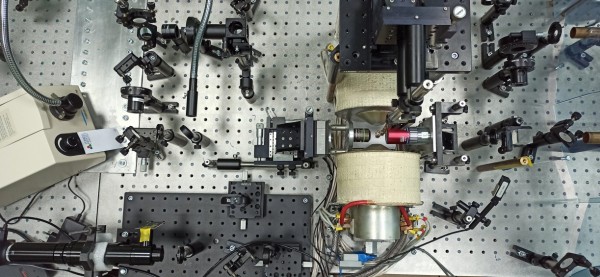
Pump-probe setup with subpicosecond temporal and submicron spatial resolutions for direct spin-waves mapping. Key elements of Space-Time-Resolved Magneto-Optical Kerr effect (STR-MOKE) setup are:
Femtosecond Laser System with tunable wavelength
TEMA + TOPOL (OPO) laser system (Avesta Project LTD)
Pulse duration <120 fs
Three outputs: 680-1080, 1050, 525 nm
Pulse repetition rate 70 MHz
Average power up to 800 mW
High-clearence micro-objectivies
Olympus and Mitutoyo
Magnification x20 and x50, NA 0.4 and 0.42 allow to get spot diameters ~1.5 μm. Working distancies 12 and 17 mm
Three-coordinate piezo-translator
Piezosystem Jena
The translator is used to shift pump and probe spots on the sample. Motion within a range of 0-80 μm with resolution down to 10 nm.
Water-cooled electromagnet
The magnet is specially designed by AMT&C Group to provide fields up to 2 T with poles distance up to 40 mm.
Time-resolution and Detection system
The probe beam polarization is analyzed by an optical bridge detector composed of a Wollaston prism and balanced detector. Lock-in amplifier locked to the pump modulation frequency of 1 MHz. Pump is modulated by the acousto-optical modulator (Avesta Project Ltd.). The temporal resolution is obtained by using a 600mm-long retroreflector mounted on a linear translation stage (Thorlabs): time window 4 ns, temporal resolution down to 10 fs.
Recent publications
-
Ia. A. Filatov, P. I. Gerevenkov, M. Wang, A. W. Rushforth, A. M. Kalashnikova, N. E. Khokhlov
Spectrum evolution and chirping of laser-induced spin wave packets in thin iron films
Applied Physics Letters 120, 112404 (2022) [https://doi.org/10.1063/5.0077195]
Special issue on Ultrafast and Terahertz Spintronics
-
Ia. A. Filatov, P. I. Gerevenkov, M. Wang, A. W. Rushforth, A. M. Kalashnikova, and N. E. Khokhlov
Spectrum evolution of magnetostatic waves excited through ultrafast laser-induced heating
Journal of Physics: Conference Series 1697, 012193 (2020) [https://doi:10.1088/1742-6596/1697/1/012193]
- N.E. Khokhlov, et al., Optical Excitation of Propagating Magnetostatic Waves in an Epitaxial Galfenol Film by Ultrafast Magnetic Anisotropy Change, Phys. Rev. Applied 12, 044044 (2019).
Time resolved magneto-optical spectroscopy
Pump-probe spectroscopic setup with subpicosecond-time and down-to-micron spatial resolution consists of several important parts:
Laser system
Regenerative Amplifier PHAROS + Optical Parametric Amplifier ORPHEUS (RA + OPA)
PHAROS SP-06-200-PP (Light Conversion)
Output pulse duration 170 fs
Output average power 5 W
Central wavelength 1028 nm ± 5 nm
Pulse repetition rate 1 kHz – 1MHz
Max. pulse energy 1mJ
Oscillator output is optional
ORPHEUS PO15F1H (Light Conversion)
Tuning range 630 – 1030 nm (Signal), 1030 – 2600 nm (Idler)
Output pulse duration 120 – 190 fs
Average power 500 mW
Pulse repetition rate 5 kHz
Laser system enables two-color pump-probe experiment.
High-clearance reflective microobjective Newport
Magnification x15, NA 0.4 allows to get spot diameters ~5 μm. Working distance 13 mm. No dispersion in wavelength range 200-20000 nm.
Electromagnets
Various electromagnets provide tunable DC magnetic fields up to 1 T. Configuration of magnets allow measurements in Faraday and Voigt geometries, and in a geometry of a longitudinal magneto-optical Kerr effect.
Time-resolution and Detection system
The probe polarization change is measured by the detection scheme including optical balanced detector and Wollaston prism. Lock-in amplifier reference channel is on the pump modulation frequency up to 2 kHz; Pump is modulated by the optomechanic modulators. The temporal resolution is provided by a linear translation stages (Newport and Thorlabs) 600 and 300 mm-long (time window 4 and 2 ns, resolution down to 10 fs).
Cryostat
Continous flow optical cryostat Microstate HE (Oxford Instruments) enables pump-probe experiments at temperatures down to 10 K. Cryostat can be used in combination with electomagnets and with microobjective.
Recent publications
-
L. A. Shelukhin, R. R. Gareev, V. Zbarsky, J. Walowski, M. Münzenberg, N. A. Pertsev and A. M. Kalashnikova, Spin reorientation transition in CoFeB/MgO/CoFeB tunnel junction enabled by ultrafast laser-induced suppression of perpendicular magnetic anisotropy. Nanoscale, accepted (2022) [https://doi.org/10.1039/D2NR00637E]
- I. O. Karpovsky, et al., Laser-induced magnetization precession in the magnetite Fe3O4 in the vicinity of a spin-reorientation transition, J. Phys.: Conf. Ser. 1400, 077001 (2019).
- L. A. Shelukhin, et al., Ultrafast laser-induced changes of the magnetic anisotropy in a low-symmetry iron garnet film, Physical Review B 97, 014422 (2018).
Picosecond acoustics
Picosecond acoustics setup is a special variety of the time resolved magneto-optical spectroscopy. Specially designed pump and probe beam paths enable studies of the dynamics of optical and magneto-optical effects in the samples subjected to picosecond-long strain pulses in addition to the laser pump. The same setup is also used to examine strain pulses created during ultrafast laser-induced processes.
Recent publications
- Ia. A. Mogunov, S. Lysenko, F. Fernández, A. Rúa, A. V. Muratov, A. J. Kent, A. M. Kalashnikova, and A. V. Akimov, Photoelasticity of VO2 nanolayers in insulating and metallic phases studied by picosecond ultrasonics. Phys. Rev. Materials 4, 125201 (2020).
- Ia. A. Mogunov, S. Lysenko, A. E. Fedianin, F. E. Fernández, A.Rúa, A. J. Kent, A. V. Akimov, and A. M. Kalashnikova, Large non-thermal contribution to picosecond strain pulse generation using the photo-induced phase transition in VO2. Nat Commun 11, 1690 (2020).
- Ia. A. Mogunov, F. Fernández, S. Lysenko, A.J. Kent, A.V. Scherbakov, A.M. Kalashnikova, and A.V. Akimov, Ultrafast Insulator-Metal Transition in VO2 Nanostructures Assisted by Picosecond Strain Pulses. Phys. Rev. Applied 11, 014054 (2019).
Dielectric spectroscopy
The dielectric spectroscopy setup investigates the dielectric properties of single crystals in the frequency range from 1 mHz to 5 MHz and at temperatures from 5 to 500 K with basic accuracy 0.05%. The precision RLC meter AKTAKOM AM-3028 (20 Hz – 1 MHz) are used for capacitance measurements of samples. The helium flow cryostat Cryo CRC 102 with Scientific Instruments Model 9700 temperature controller enables to perform the measurement in the specified temperature range. The main feature of this setup is the ability to investigate the dielectric properties of non-ferroelectric crystals with very small typical capacitance of samples about 1 pF. The electromagnet provides tunable static magnetic fields up to 1 T which are applied to the sample in cryostat.
Recent publications
- R.M. Dubrovin, et al., Incipient geometric lattice instability of cubic fluoroperovskites, Phys. Rev. B 104, 144304 (2021). [https://doi.org/10.1103/PhysRevB.104.144304]
- R.M. Dubrovin, et al., Lattice dynamics and spontaneous magnetodielectric effect in ilmenite CoTiO3, J. Alloys Compd., 157633 (2020). [https://doi.org/10.1016/j.jallcom.2020.157633]
- R.M. Dubrovin and R.V. Pisarev, Spontaneous Magnetodielectric Effect and Its Coupling to the Lattice Dynamics in Fluoroperovskites, J. Exp. Theor. Phys. 131, 189 (2020). [https://doi.org/10.1134/S1063776120070043]
- R.M. Dubrovin, et al., Lattice dynamics and microscopic mechanisms of the spontaneous magnetodielectric effect in the antiferromagnetic fluoroperovskites KCoF3 and RbCoF3, Phys. Rev. B 100, 024429 (2019). [https://doi.org/10.1103/PhysRevB.100.024429]
- R.M. Dubrovin, et al., Unveiling hidden structural instabilities and magnetodielectric effect in manganese fluoroperovskites AMnF3, Phys. Rev. B 98, 060403(R) (2018). [https://doi.org/10.1103/PhysRevB.98.060403]
Optical spectroscopy
The Shimadzu UV-3600 Plus spectrophotometer provides precise transmittance and reflectance measurements of single crystals, films and liquids with high resolution (up to 0.1 nm) in the wavelength range from 185 (ultraviolet) to 3300 (near-infrared) nm at room temperature. High sensitivity of measurements is achieved by using a PMT (photomultiplier tube, 185-1000 nm), InGaAs (700-1800 nm) and cooled PbS (1600-3300 nm) detectors. Light sources are deuterium lamp from 185 to the switching wavelength between 282 to 393 nm and 50 W halogen lamp up to 3300 nm.
Recent publications
- P.G. Bespalova, et al., Synthesis and studying properties of the GNPs@FexOy structure, J. Phys. Conf. Ser. 2086 012132 (2021). [https://doi.org/10.1088/1742-6596/2086/1/012132]
- P.G. Bespalova, et al., Gold Nanoparticle Array Formation by Low-Temperature Annealing, {International Youth Conference on Electronics, Telecommunications and Information Technologies. Springer Proceedings in Physics, vol 255. Springer, Cham. (2020) [https://doi.org/10.1007/978-3-030-58868-7_29]
- P.G. Bespalova, et al., Characterization of iron oxide coatings prepared by MOCVD method from Fe(CO)5, Mater. Today Proc. 30, 434 (2020). [https://doi.org/10.1016/j.matpr.2019.12.391]
- M.A. Prosnikov, et al., Lattice and magnetic dynamics in the polar, chiral, and incommensurate antiferromagnet Ni2InSbO6, Phys. Rev. B 100, 144417 (2019). [https://doi.org/10.1103/PhysRevB.100.144417]
- M.A. Elistratova, et al., The Effect of Crystallization Conditions on the Spectral Characteristics of Tetraphenylporphyrin Thin Films, Semiconductors 53, 51 (2019). [https://doi.org/10.1134/S1063782619010056]
- A.D. Molchanova, et al., Lattice dynamics and electronic transitions in a structurally complex layered copper borate Cu3(BO3)2, Phys. Rev. B 96, 174305 (2017). [https://doi.org/10.1103/PhysRevB.96.174305]
Scanning-probe and optical microscopy
Scanning Probe microscopy system NT-MDT NTEGRA Prima is capable of performing measurements using Atomic Force Microscopy (contact, semi-contact), Kelvin Probe Microscopy, Magnetic Force Microscopy, Scanning Tunneling Microscopy, Electrostatic Force Microscopy, Scanning Capacitance Microscopy, Spreading Resistance Imaging and Lithography methods in the temperature range up to 150°C.
Olympus BX53-F transmitted light polarized microscope provides optical characterization of samples. Light source is 100 W halogen lamp. The microscope is equipped by achromat 4× PLN4XP/0.1, 10× ACHN10XP/0.25, 40× ACHN40XP/0.65 and semi-apochromat with long working distance 20× LMPLFL20x objectives. Jenoptic ProgRes SpeedXTcore5 color 12 bit CCD camera with 5 Mpx resolution is used for visualization. Also, the microscope is equipped by a conoscopy module with a focusable Bertrand lens (U-CPA), Sénarmont compensator (U-CSE) and a λ/4 plate (U-TP137).
Recent publications
- M.A. Prosnikov, A.N. Smirnov, V.Yu. Davydov, Y. Araki, T. Arima, and R.V. Pisarev, Lattice and magnetic dynamics in the polar, chiral, and incommensurate antiferromagnet Ni2InSbO6, Phys. Rev. B 100, 144417 (2019). [https://doi.org/10.1103/PhysRevB.100.144417]
- A.D. Molchanova, M.A. Prosnikov, R.M. Dubrovin, V.Yu. Davydov, A.N. Smirnov, R.V. Pisarev, K.N. Boldyrev, and M.N. Popova, Lattice dynamics and electronic transitions in a structurally complex layered copper borate Cu3(BO3)2, Phys. Rev. B 96, 174305 (2017). [https://doi.org/10.1103/PhysRevB.96.174305]
Time-domain THz spectroscopy and THz pump/optical probe setups
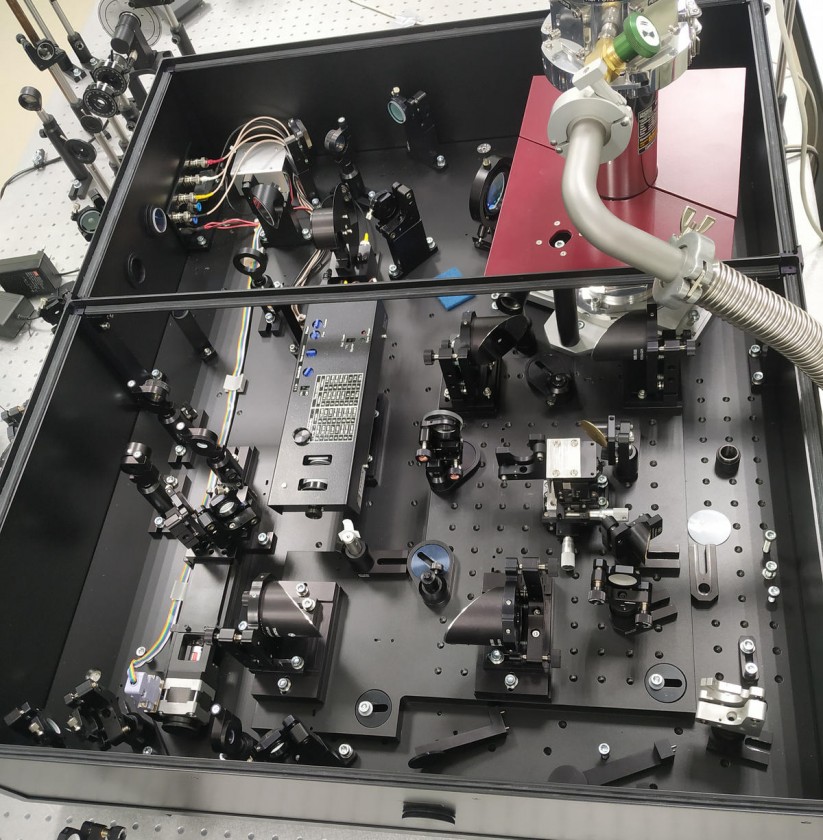
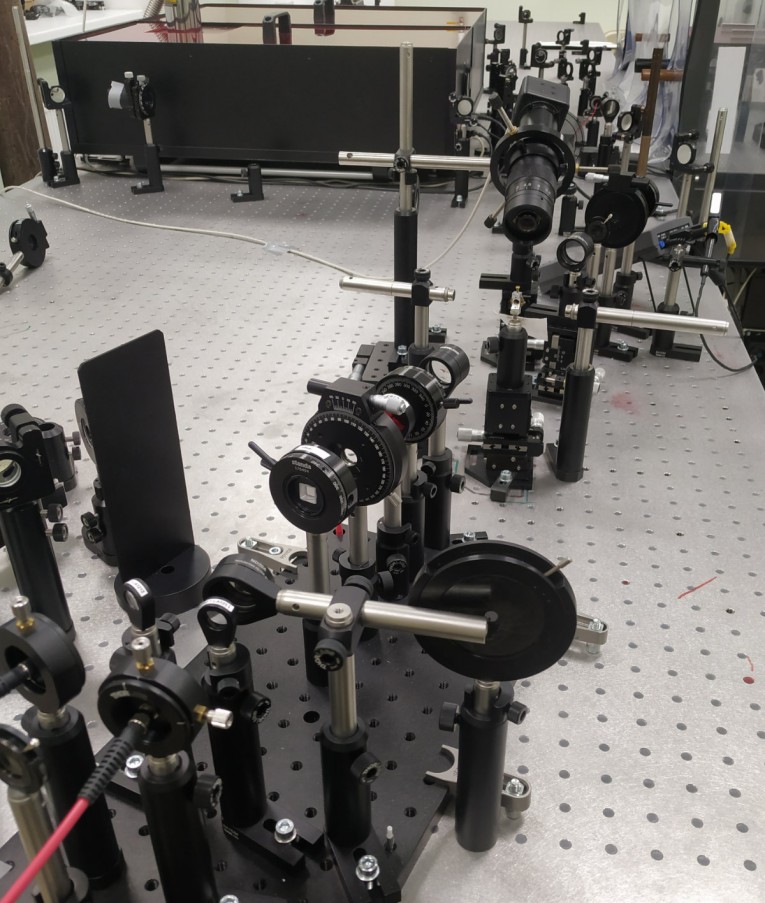
A new lab room has been set up with the support of the Russian National Initiative "Science". It is equipped with Ti:Sapphire femtosecond amplifier REUS (Avesta Project LTD), capable to produce 5mJ 35 fs pulses with 1 kHz repetition rate at 800 nm. Which is split and pumps optical parametric amplifier (OPA) with sum frequency generation module PARUS allowing us to tune the wavelength from 480 to 4000 nm with an application for tunable multi-color pump-probe spectroscopy. Ultra-short pulses makes it possible to study excitations up to 8 THz.
The amplifier also used to generate high-intensity pulsed THz radiation in the range 0.2-2.5 THz (Tera-AX), via phase-matched optical rectification in cryogenically-cooled lithium niobate crystal.
Thus the setup is extremely versatile allowing powerful combination of THz and optical pulses in wide frequency range.
Whiteboard & coffee-machine
Scientific discussions are more productive with fresh coffee in a cup and a marker in a hand.
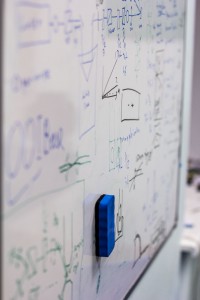
Equipment we tested in FerroLab
Optomechanics ST1 ENGINEERING KOREA
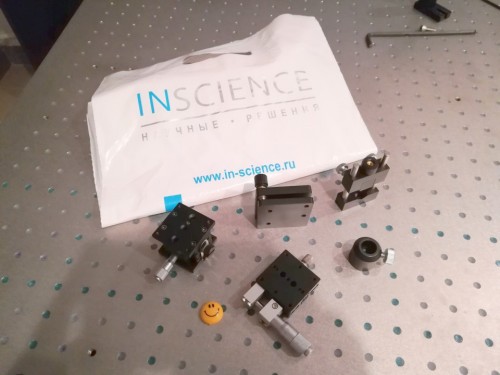
Today we got into the hands of the optomechanics of fabrication of the St1 Engineering, Korea. The trial set courtesy of our partners, In-Science company. A few different products are in the set:
- X- and z-translation stages
- Post holder
- Tilt platform
- Optics holder
All items are made of anodized aluminum, but x-stage is made of steel.
Post holder is 1/2 inch. size and is well match the Thorlabs post. It has spring-loaded thumbscrew, like Thorlabs. It is more convenient than simple thumbscrew. But manufactures did not make the hex hollow for locking. There is some sticker on this place, but there is no wonted hollow under that. The thumbscrew is sitting nice in the thread. Standard M6 tapped hole on bottom.
Optics holder is assembled from well-matched details, no noticeable slackness. The fine clamp is very smooth to the touch. There is M6 tapped hole on bottom.
Linear stages are smooth in movement. They are fully lockable. The z-stage has side lead screw. That may be more convenient than Standa solution at vertical stages. The stages could be attached to each other directly, but not to the optical table –some base is needed. Vertical stage has M6 and M3 holes, x-stage – M3 holes only. This solution is not convenient as M6 and M4 are used usually. Standa has the same issue.
Tilt platform could be mounted in horizontal or vertical positions both with M4 holes. The adjustment knobs are made of plastic suddenly, not of aluminum. The solution is looking untrustworthy, fragile. And with stickers again. Four M4 holes on the surface are convenient and give the freedom to install some elements like prisms.
In conclusion, the quality of the items is at the level of Thorlabs and Standa companies, some aspects are more convenient, but some (stickers, plastic parts) are unconventional and may be the issues of the products. Generally, the products may be used with optomechanics of famous brands (Thorlabs, Standa, others) together as they are compatible and with the nice quality.


